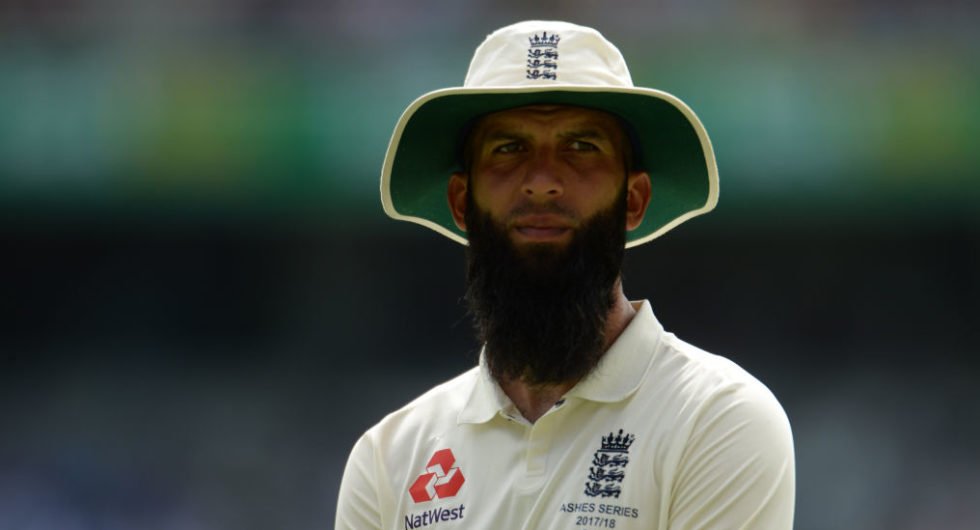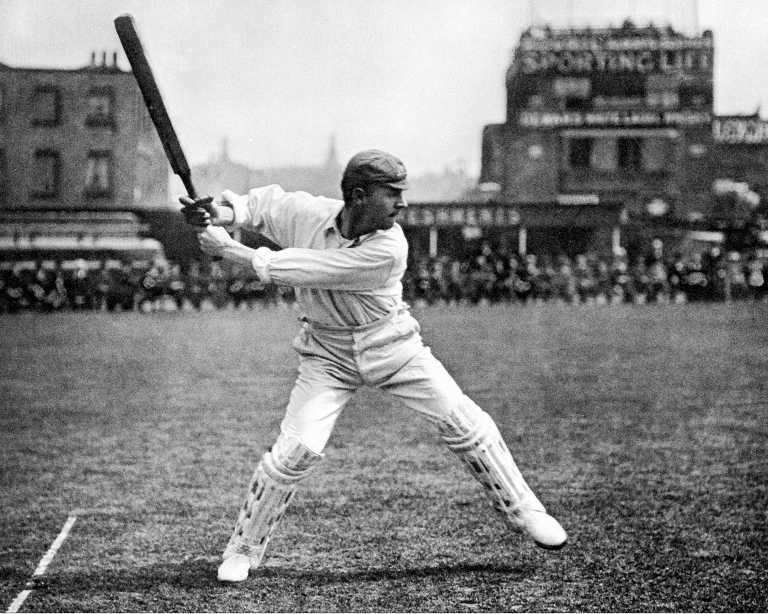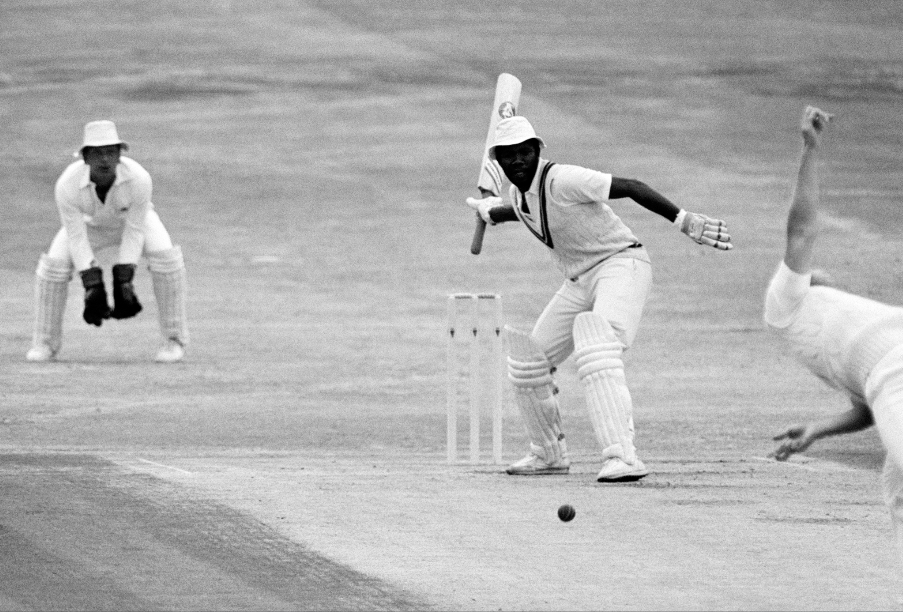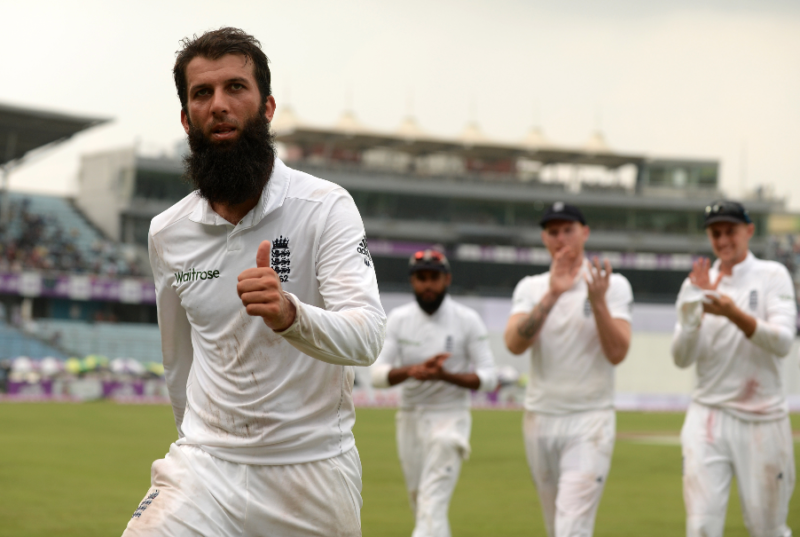Gamechangers: Ancient & modern

 by Richard H Thomas
by Richard H Thomas
@rich_thomas99 15 minute read
Richard H Thomas on three favourite figures from the game – from different times and for different reasons.
Over these last few years, my old ‘The Greatest’ column covered plenty of ground. Almost every one of cricket’s quirky outlying foothills was climbed. It described cricketing actors, aristocrats, and anti-climaxes. There were baggage men, barrackers, benefactors and batting tracks. Among the weird and wonderful up for discussion were grandees, gastronomes, mystery men, museum exhibits, polymaths, Peruvians, feet, fingers and reasons to be terrified. Perhaps an appropriate way to start this new column would be to leave behind the odd and to celebrate the outstanding; the people and events that influenced our splendid game. This, therefore, is a personal choice of three cricketers who somehow stand out within a magnificent cast of thousands.
Like all choices of “favourite” of course, it is open to challenge. If you have a soft spot for Walter Hammond for example, someone will always point out that Bradman’s stats were better. If Denis Compton was your boy, a Keith Miller fan will claim that he was just as entertaining to watch, but that he could also bowl out the opposition. Jacques Kallis fans will always wave a better batting average and 292 wickets in the face of Sachin supporters. Michael Holding aficionados will be reminded that he never quite put the fear of God into batsman like Sylvester Clarke could. In response, those choosing Hammond, Compton, Tendulkar and Holding will say that those others never made them feel the same sense of excitement. Personal appeal goes beyond numbers, facts and what is tangible; it is intuitive, emotional and inexplicable but no less real or important.
Esoteric and abstract perhaps, but some sort of selection system always helps when making such choices. This selection is based on one player from the ancient past, one from the recent past and one the present. Two of these players I actually saw play, but the other was in his grave before my grandparents got married. It wasn’t an easy choice; I have always loved watching Warne bowl, and Gilchrist batting but neither made the cut. I almost picked Sarah Taylor for the sheer style and rattlesnake brilliance of her wicket keeping. After a lot of thought, I have come up with three blue-riband boys, and here they are.
***
When my father gave me Denzil Batchelor’s The Book of Cricket to read as a child, I’m sure he expected me to give it back. I didn’t, and he has never mentioned it, perhaps realising as how much I loved it. I was charmed by the vintage black and white photographs, and by the pathos and nobility of Batchelor’s beautiful prose. But one cricketer – Victor Trumper – always stood out, even within the so-called Golden Age absolutely brimming with champions. As Batchelor himself suggests, there were “other great Australian batsmen” celebrated “in folk lore”, but “none passed as Trumper has passed, into the common vocabulary as a sheer symbol of cricket”.

The iconic shot of Trumper that helped make him such a hero
I am not on my own in admiring the Australian opener. As an early career vocalist, Sir Tim Rice performed under the pseudonym “Victor Trumper”. The Aussie “caught the eye” suggests Rice, “in a way that maybe not even the Don did”. I, like the great lyricist, never saw either of them bat, but I know exactly what he means. “Other batsmen of the golden age like Hill and Noble” wrote Denzil Batchelor, remain “shadowy images in the pageant of the past” while Victor Trumper “thunders in our ears like a roll of drums and still shines forth like an army with banners”. Poet Victor Daley obviously thought so too; his 1904 ditty reflects how Trumper’s acclaim reached way beyond the cricket field:
Ho Statesmen, Patriots, Bards make way!
Your fame has sunk to zero
For Victor Trumper is today
Our one Australian hero
English crowds saw him first in 1899, and his scores across the Ashes series were unremarkable, aside from one innings. In the Lord’s Test he made 135*; a knock of such quality that WG Grace presented him with a bat modestly noting that it was “the present champion” passing on the baton to “the future champion”. Three years older, his powers refined and his legend enhanced, he toured England again in 1902, making 2,570 runs including 11 centuries. In the fourth Test at a wet Old Trafford, he made 103* before lunch – “an impossibly romantic and cavalier notion” according to Alan Tyers and Rob Smyth, and the first of only five times it has ever been achieved. He was the ultimate dasher, and those he put in the shade didn’t seem to mind. England skipper Archie MacLaren for example conceded that although he himself was “considered out of a good stable”, next to Trumper he was “an honest selling plater in the company of a Derby thoroughbred.”
True, Trumper’s overall record is unexceptional by modern standards. His Test average of 39.04 is below the threshold of 40 that supposedly signals world-class. But as Batchelor noted, “it wasn’t the deeds he did but the matchless way in which he did them”. Further, as Neville Cardus suggested, the genius of Mozart could not be determined by simply counting the notes within his compositions. More bluntly, as an Aussie wag reminds us, statistics are like a bikini – “what they show is revealing, but what they hide is crucial”.
There was, and is, something magical about him; few seem to be able to put their finger on what this actually is, but many acknowledge that it exists nonetheless. As kids, writes Carl Bridge, “we Australians are mightily proud of Bradman. But, as little boys, we all wanted to be Trumper”. While Bradman was the aeroplane, as Cardus put it, “Trumper was the soaring eagle”.
Gideon Haigh recognised the mystic nature of his subject when researching his book Stroke of Genius: Victor Trumper and the Shot that Changed Cricket. “The primary material was thin” he writes, “his period remote, his contemporaries long gone, and the mythology thick indeed”. Getting to grips with Victor Trumper, he concludes, was like “entering a hall of mirrors” where “everyone is quoting everyone else” and “stories and their origins have long since parted ways”. In his own time though, suggests Haigh, “Trumper was not just hugely admired but deeply loved: contemporaneous responses to him have an emotional incandescence that I suspect is almost unique”. It might still be the case.
Besides being admired for his cricketing style, Trumper was famously classy off it, often giving gate money to youngsters outside the ground. Batchelor reports that kids visiting his sports shop ready to empty their piggy banks to fund the purchase of a new bat would have it given to them for free. Teammate Frank Iredale indeed, recalled that Trumper “thought of others so constantly that one could almost believe he lived for the rest of the world.”
He was simultaneously a popular hero and hopeless businessman that didn’t live to see 40; the majesty of his talent was not matched by the strength of his constitution. Cardus reflected that “Our brother stayed not, but the splendour stays, our brother til the last of English days”. Aussie colleague Charlie Macartney concluded that there was only one satisfaction derived from Trumper’s early death, and that was that the world never had to see him “grow old as a batsman”.
***
Malcolm Marshall grew old as a cricketer, but not as a man. Unlike Victor Trumper, his stats can be compared to the very best. He took 376 wickets in 81 Tests at an average of 20.95. Paul Weaver describes this statistic as the “lowest in the modern age” but that doesn’t really do it justice. None of the 17 men above him played Tests after 1968, none of them played more than 44 Tests, and none of them played for anyone other than Australia or England. All in all, Marshall took 1,651 first-class wickets and scored more than 11,000 runs. His influence on domestic cricket was deeply felt in his native Barbados, in Natal, and of course in Hampshire, who loved him as much as any county could love any player.
Like Trumper though, Marshall is more than numbers on a page. He was ultimate box office, possessing every single fast bowling weapon imaginable, and a couple more that he dreamed up for himself. He was blisteringly fast of course, the ball gathering pace as it skidded off the wicket. His bouncer was a belter; Russell Jackson explains that while playing club cricket in Melbourne, Marshall developed a “Vampire ball”, so named because “it just nicks their neck on the way through.” When conditions determined a different approach, he turned it down a notch and cut it and swung it better than anyone else. On top of it all, he was as accurate as a diamond cutter.

“As accurate as a diamond cutter”
“Accuracy”, wrote American novelist Nathaniel Hawthorne, “is the twin brother of honesty”, and what elevated Marshall even further was his wholehearted commitment to the job at hand, whatever it was and wherever it needed to be done. He was, wrote his Hamsphire captain Mark Nicholas, “no waster – not of time, not of talent – nor a shirker of any situation or challenge which confronted him”. Joel Garner said that his old comrade never gave “less than 100 per cent for any team in which he plays or is involved.”
Take the third Test against England at Leeds in 1984. The match had hardly wiped the sleep from its eyes when lurking in the gully, he sustained a double fracture of his left thumb. Tony Cozier reports that he was advised to pull out of the match and to forget cricket for at least a couple of weeks. But that was not the Marshall way; he risked further damage by going out to bat when his team was creaking and a colleague was nearing a Test match hundred. He stuck around for long enough to steward Larry Gomes to a century, and with his remaining good arm, routed England to the tune of 7-53 in 26 overs.
It was a Herculean effort from a man who at a slim 5ft 10ins, certainly didn’t look like a Hercules. One of the England players in that Leeds match was Ian Botham, who apparently used to call Marshall “the skinny wimp”. Presumably with a big smile, so Marshall knew he was joking. So feared was he in English county cricket that Nicholas recalls opposing tailenders offering to carry his kit in the hope for an easier time of it.

Marshall batting with one arm
For the whole of the 1980s, he looked like he could get anyone out whenever the fancy took him, and those around him knew it. Geoffrey Boycott picked him in a “Greatest Ever XI” that covered players operating across a whole century. Graham Gooch called him “the most brilliant bowler of my time” and Mike Selvey wrote that he was “unquestionably one of the greatest fast bowlers of them all, and, quite arguably, the very best”.
But more than this, even to a distant spectator like me, there was also something else. He was, I think, the coolest cricketing dude of them all. You could tell that he was brilliant without being a braggart, and that he could combine genius with generosity of spirt. Martin Crowe called him “the finest opponent of them all – furious but fair and fantastic value in the bar” while in a touching eulogy, Mark Nicholas described his friend as maintaining “excellence without arrogance”, and earning respect “without ever assuming it”.
***
While Trumper is legend and myth, and Marshall is only a memory, my final choice is very much a man of the moment. When Moeen Ali first appeared with three lions on his chest, some asked what he was there to do. There was no doubt about who he was of course; his beard and general demeanour are clearly indexical of a man with strong beliefs and a clear sense of self-identity. The confusion was about whether he was a batsman who could bowl tweakers, or a frontline spinner who could score useful lower-order runs. By the time, batting at No.7 in his second Test, he almost shepherded an unlikely draw with Sri Lanka with a century that was patient, poised, measured and majestic, the batting element of Moeen’s cricketing ability was in no doubt. Three Tests later, when he took six Indian wickets at Southampton, we knew about the bowling bit too. Ben Stokes might be the box office boy, but Moeen is capable of similar feats except that everyone will probably make less fuss. Surely, there has been no more elegant English left-hander since Gower, and while he may not yet be a Graeme Swann, he still has a golden arm; five four-fors, four five-fors and one 10-in-a-match suggests he is always likely to win you a Test match or two.

Moeen is an understated icon
These are impressive achievements, but of course there is more to Moeen Ali than just cricket. He is emblematic that English cricket must represent all its constituent elements. Sure, there are those who cast doubt on whether it should be Muslim first and England second or the other way around, but that’s just missing the point. Most England fans, including me, are just glad he plays for us and not for someone else. Indeed, when, with a huge grin, he was mobbed by delirious teammates after his tail-mopping hat-trick against South Africa at The Oval, the warm feeling that we live in a multicultural cricket nation was in no small part down to him.
But there is more still. He is a man of convictions, but understands that his teammates might not share them, but that it is no reason to create an issue when there isn’t one. When England wrapped up a successful series against South Africa at Old Trafford last summer for example, he did not partake of the after-match champagne, but The Sun reports Moeen’s assurances that “we have a great laugh” and that “I really enjoy being in the changing room”.
Modesty seems to be inbuilt. Jonathan Liew reported in August that you could get 50-1 on Moeen to be BBC Sports Personality of the Year, but that the prospect horrified him: “I’d be too embarrassed to go there. I hate it. Well, I don’t hate it, but …” The man has respect for the game too. While the conspiracy theorists were out in force in the first Ashes Test at Brisbane, claiming that the front popping crease was crooked, fuzzy, bloated or blurry, he urged them to accept the umpire’s decision and to get on with it. He is also a man with opinions. “It is Moeen’s willingness to speak out on whatever issue moves him” asserts Liew, “whether it is politics, religion or access to decent junior cricket kit – that has made him one of the most important things to happen to English cricket in recent years”.
So Moeen would shirk being centre of attention on the BBC, Trumper batted without what Philip Trevor called “vainglory” and Malcom Marshall, according to Mark Nicholas, displayed “confidence and self-assurance” within “immense humility”. They are splendid cricketing role models across a century and a bit. In fact, Grantland Rice might have written his famous verse with them in mind:
For when the One Great Scorer comes
To mark against your name,
He writes – not that you won or lost –
But how you played the Game.
They have all played it well, inspiring – and continuing to inspire – many who play our game, and those like me, who sit and watch in awe.

